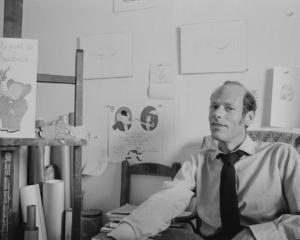In The Walworth Beauty, Michele Roberts evokes aspects of an older London.
THE WALWORTH BEAUTY
Michele Roberts
Bloomsbury NZ
By Cushla McKinney

Advance publicity for The Walworth Beauty describes it as "A haunting story of desire and exploitation, isolation and loss". Sadly, despite each of these themes being clearly evident throughout the story, the haunting never really reached beyond the confines of the page.
The novel is structured around two stories that share a setting but are separated in time. The first takes place in 1851 and follows Joseph Benson’s attempts to record the details of the working lives of the "criminal poor" - those who chose to exploit their fellow men rather than pursue a proper trade - for journalist and sociologist Henry Mayhew.
Tasked with interviewing the prostitutes who ply their trade on the south banks of the Thames, Joseph has every confidence in his ability to provide succinct, factual accounts of his subjects’ "business" affairs, but the lines between professional and personal interest rapidly blur and when the research takes him to a boarding house in Apricot Pl, where he encounters the formidable Mrs Dulcimer, a (literal) black widow who provides a refuge for girls who have fallen on rough times, his fascination turns to obsession.
Repeated visits reveal the complex and precarious nature of female respectability, forcing him to re-evaluate his own relationships and Joseph too eventually finds sanctuary within the walls of Apricot Pl.
His story is interwoven with a second narrative, set in 2011 and centred around a former English lecturer, Madeleine, who lives in the basement flat of the same building 160 years later. Newly redundant and nearing retirement age, Madeleine spends her days trying to write, browsing Mayhew’s London Labour and the London Poor and roaming the neighbourhood, whose streets, like her home, are redolent with the shadows of the past.
Not yet ready to accept a lonely decline into old age, she, like Joseph, is desperate to find human connection, and the two characters haunt one another, past and future lives echoing but never quite intersecting.
Although the novel’s central premise is the exploration of the lives of women, it is one that, at least for me, fails to deliver.
I found Joseph’s sections of the novel and their portrayal of the Victorian era interesting, but Madeleine’s left me cold (to be fair, this is probably because I found little about her with which I could identify).
However, my biggest difficulty with it was with the third main character - London itself. It is certainly possible to make even an unfamiliar city come alive, Kim Stanley Robinson having done just this brilliantly in New York 2140, but it takes more than the recitation of streets and place names that litter the book.
Roberts might evoke certain aspects of the historical setting well, but she completely failed to transport me to Madeleine’s London, leaving me a frustrated onlooker rather than an active participant in the story. People familiar with the city and interested in its history will probably enjoy this novel, but I’m not sure its beauty will be evident to all.
- Cushla McKinney is a Dunedin scientist.











